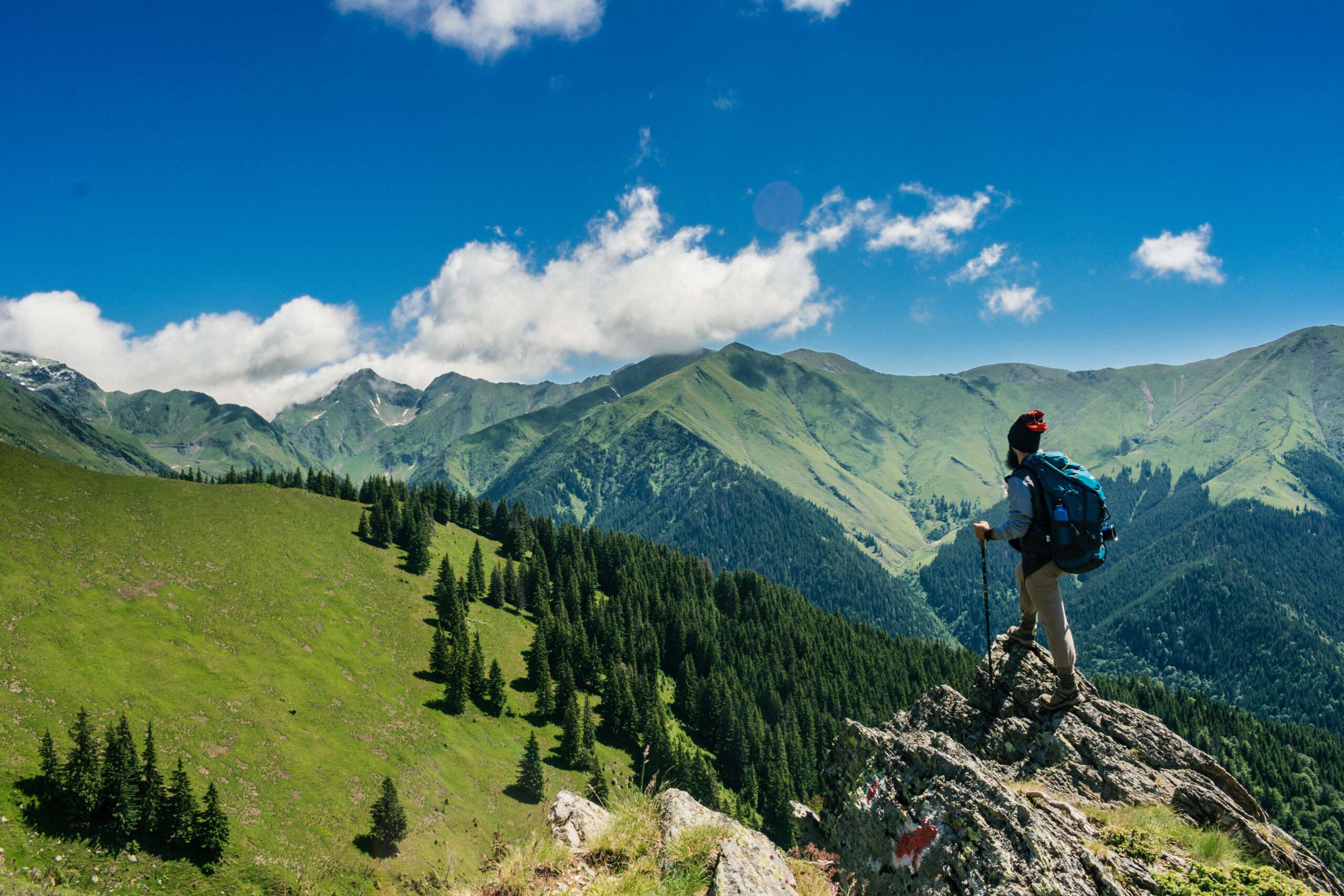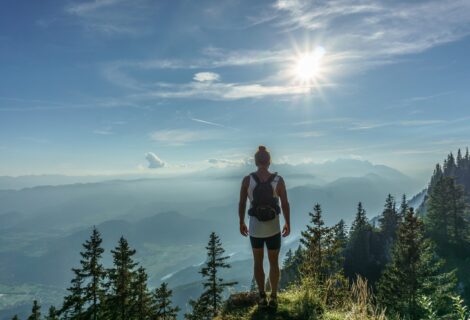An Ultimate Guide to Start Hiking: Tips, Tricks & Necessary Gear
What is Hiking and Why You Should Start Hiking Today?
Hiking is an activity that is both exciting and rewarding. It is a great way to get outdoors, explore nature, and challenge yourself. It can also help improve your physical fitness and mental well-being. If you’re looking for a way to get more active, then hiking is definitely worth considering! Hiking provides many benefits, including improved cardiovascular health, increased muscle strength, better balance, stress relief, and improved mood. Plus, it’s an opportunity to explore the great outdoors while getting some exercise in the process. Whether you’re a beginner or a seasoned hiker, there are plenty of trails available for all skill levels. So why not give it a try today? You won’t regret it! Hiking is a great way to get outside and explore nature. Plus, it’s a fun activity that can help improve your physical fitness and mental well-being. You may also like… The Benefits of Outdoor Activities for Physical and Mental Health.
How to Prepare for Your First Hike – Essential Checklist
Going on your first hike can be a thrilling and rewarding experience, but it’s important to prepare properly. Knowing what to bring and how to prepare for your first hike is essential for a successful and safe journey. This guide will provide you with an essential checklist of items that you should bring along on your first hike. We’ll also discuss the basics of how to start a hike, from choosing the right trail to packing the right gear. With this beginner’s guide to hiking, you’ll be ready for your first adventure in no time!
1. Wear clothes that are suitable for the weather and terrain – Lightweight, comfortable clothing: shorts, t-shirts, long pants
2. Hiking boots or hiking shoes with a good grip and ankle support
3. Appropriate layers of clothing: wool or synthetic socks, light rain jacket/pants, fleece or windbreaker top
4. Waterproof coat or poncho (optional)
5. Sun hat or sunglasses to protect your eyes from the sun (optional)
Dive into Weight Loss: The Ultimate Guide to Swimming for Weight Loss
Tips & Tricks to Stay Safe When you Start Hiking
Hiking is a great way to explore nature and enjoy the outdoors. But it’s important to stay safe while you’re out there on the trail. From carrying the right supplies to preparing for any potential danger, here are some tips and tricks that will help you stay safe while hiking.
1. Learn about the terrain you’ll be hiking in
2. Plan your route ahead of time
3. Wear proper clothing and footwear
4. Bring plenty of water and snacks
5. Tell someone where you’re going and when you’ll be back
6. Carry a first aid kit with you at all times
7. Know how to identify dangerous plants or animals in your area
8. Watch out for extreme weather conditions like heat or cold
9. Always be aware of your surroundings.
Following these tips can help ensure that your next hike is a safe one!
Different Types of Hikes & Trails You Can Try
Are you looking for something new and exciting to do outdoors? Hiking is one of the best ways to explore nature and experience the beauty of the outdoors. From mountain hikes to coastal hikes, there are so many different types of trails you can try. Whether you’re a beginner or an experienced hiker, there’s something out there for everyone. In this article, we’ll discuss different types of hikes and trails you can explore near you. From day hikes to multi-day treks, we’ll cover all the options available for your next outdoor adventure! Fitness Hiking is a great way to get in some exercise. If you’re looking for hikes that are specifically designed for fitness, try going on a hike near the seashore or up on a mountain. There are so many different types of hikes, that it’s difficult to narrow them all down! Here are some ideas for trails you can explore: A beach hike is perfect for those who want to explore the seashore but still enjoy the beauty of nature. You can head out on a coastal trail and walk along the water or even stop and swim if the weather permits!
Necessary Gear Required for a Safe & Enjoyable Experience
Hiking is an incredible way to get out and explore the great outdoors. But, in order to have a safe and enjoyable experience, it’s important to make sure you have the right gear. From essential items like a good pair of hiking boots and a first aid kit, to more specialized items like trekking poles and hydration packs, there are many pieces of essential gear for hikers that should be included in your packing list. With the right gear, you can make sure you’re prepared for any situation that comes your way while on the trail. So let’s take a look at some of the most important pieces of equipment for any hiker! Boots! Before you set out on your hike, you’ll want to make sure your boots are in good condition—whether they’re waterproof or not. Hiking boots should give you the best support while walking and be comfortable while carrying a heavy load. When buying hiking boots, it’s important that they’re made of good material so they can withstand the outdoors without giving out or breaking down quickly. You should also consider the type of terrain and weather conditions where you’ll be hiking–some hiking shoes are better for snow than others, for example. Keep in mind that when purchasing new shoes, many stores offer a return policy if the fit isn’t quite right.
How To Choose the Right Hiking Gear
What Makes Good Hiking Gear and Why is It Important?
Hiking is a great way to get outdoors and explore the world around us. However, it’s important to have the right gear to ensure your safety and comfort while on the trail. Good hiking gear should be lightweight, durable, and designed for the type of terrain you’ll be covering. From essential items like a waterproof jacket and sturdy boots to other items like a compass or first-aid kit, having the right hiking gear can make all the difference in your outdoor adventure. In this article, we will discuss what makes good hiking gear and why it is so important for any hiker to carry. There are many different types of hiking gear, some essentials and some that aren’t necessary but can be helpful while on the trail. Examples of essential items include a sturdy pair of boots, a waterproof jacket, and a good backpack with enough space for your gear. Other items like a compass or first-aid kit are things that you could bring along and it would still be helpful to you while outdoors. However, they aren’t necessarily vital to your safety on the trail – these pieces of equipment should certainly not fall below an adventurer’s expectations though! Other pieces of nonessential gear would include sunscreen, a water bottle, snacks, and a camera. Examples of nonessential items include your phone charger, cosmetics/personal hygiene products, a laptop/tablet computer (though these may be helpful if you’re not comfortable with being disconnected), and extra clothing.
The Top 10 Essential Pieces of Hiking Gear You Need for Every Trip
If you’re an avid hiker, then you know that having the right gear is essential for a successful and enjoyable trip. From camping gear to backpacking gear, there are many different items to consider when packing for a hike. To help make your next outdoor adventure a success, we’ve put together a list of the essential pieces of hiking gear that you need for every trip. From lightweight backpacks to outdoor clothing, this comprehensive checklist will ensure that you have everything you need to make your next adventure unforgettable!
1. Hiking Boots – Choose a pair that provide good ankle support and waterproofing.
2. Hiking Backpack – Choose one with adjustable straps and pockets to easily store and access your gear.
3. Water Bottle – Make sure you keep hydrated on the trail.
4. Navigation – Bring a map, compass and/or a GPS device.
5. Emergency Kit – Include items such as a first-aid kit, whistle, matches, and a headlamp.
6. Food – Bring enough snacks to keep you energized throughout the hike.
7. Clothing – Dress for the weather and bring an extra layer in case the temperature drops.
8. Sun Protection – Don’t forget a hat, sunglasses, and sunscreen.
9. Insect Repellent – Keep pesky bugs away with a DEET-based repellent.
10. Trekking Poles – These can help take pressure off your knees and provide stability on uneven terrain.
How to Layer Clothing When Hiking in Different Weather Conditions
Layering your clothing when going on a hike is an important part of staying warm and comfortable in different weather conditions. Whether you’re hiking in the summer or winter, layering your clothes can make all the difference. Knowing how to layer clothing when hiking can help you stay warm, dry, and protected from the elements.
Layering clothes for winter hikes is especially important, as you need to make sure that you are wearing enough layers to keep you warm without getting too hot or sweaty. There are some tips and tricks that will help you layer your clothes effectively for any kind of weather condition. From thermal clothing layers to waterproof jackets and accessories, learning how to layer your clothing properly can make all the difference on your next hike!
1. Wear wicking layers: Start hiking with a layer of synthetic or wool clothing that will wick away moisture, like a lightweight long-sleeve shirt and pants. This will help keep your body dry and warm.
2. Layer up or down: Dress in layers that can easily be added or removed as temperatures change. This could include a lightweight windbreaker or fleece jacket, a wool or down jacket, and a waterproof raincoat.
3. Wear gloves and a hat: Make sure to protect your hands and head from the elements with gloves and a warm hat.
4. Wear waterproof boots: Invest in a good pair of waterproof hiking boots that will keep your feet warm and dry.
5. Bring extra layers: Bring an additional pair of socks, a beanie, and a scarf in case temperatures drop.
6. Don’t forget sunscreen and sunglasses: Be sure to bring a high SPF sunscreen and sunglasses to protect your skin from the sun’s rays.
Essential Navigation Tools & Maps
If you’re an outdoor enthusiast, you know that having the right navigation tools and maps is essential for a successful hike. Knowing how to use these tools and maps can make all the difference between getting lost or finding your way around. With the right navigation tools and maps, you can easily find your way around unfamiliar terrain, plan out your route, and have an enjoyable experience on your next hike! Unfortunately, map and compass reading are beyond the realm of this article.
Conclusion
Hiking is a wonderful way to explore the outdoors and get in touch with nature. Whether you’re a beginner or an experienced hiker, this Ultimate Guide to Start Hiking is sure to help you get ready for your next adventure. With the right gear, knowledge, and preparation, anyone can enjoy the thrill of a good hike. So don’t wait, grab your hiking boots and get out there! With the right attitude and preparation, you’ll be sure to have an amazing time. Happy trails!
You may also like “5 Ways to Keep Your Heart Healthy for American Heart Health Month” and “Exploring the Magic of Psilocybin Therapy.”
FAQs:
Q: Who can start hiking?
A: Hiking is an inclusive activity suitable for people of all ages and fitness levels. Beginners should start hiking with easy trails and gradually progress to more challenging hikes as their fitness and experience improve.
Q: What essential gear do I need to start hiking?
A: Necessary gear includes appropriate footwear (hiking boots or trail shoes), a backpack, weather-appropriate clothing (moisture-wicking layers, rain gear, etc.), navigation tools (map, compass, GPS), a first aid kit, extra food and water, sun protection, and a headlamp.
Q: How do I choose the right trail for my skill level?
A: Research trails online or consult guidebooks to find suitable options based on distance, elevation gain, and trail difficulty ratings. Start hiking with shorter, less strenuous hikes and work your way up as you become more comfortable and confident.
Q: What are some basic hiking safety tips?
A: Always plan ahead by checking the weather, packing the right gear, and informing someone of your itinerary. Stay on marked trails, be aware of your surroundings, and know your physical limitations. Carry a first aid kit, learn basic navigation skills, and practice Leave No Trace principles.
Q: How can I stay comfortable during a hike?
A: Wear moisture-wicking, breathable clothing to stay dry and maintain body temperature. Choose well-fitting footwear to avoid blisters, and use trekking poles to alleviate stress on joints. Stay hydrated, eat snacks for energy, and take breaks as needed to avoid overexertion.
Q: How can I minimize my impact on the environment while hiking?
A: Follow Leave No Trace principles: plan ahead, travel and camp on durable surfaces, dispose of waste properly, minimize campfire impact, respect wildlife, and be considerate of other visitors. Stick to established trails, and avoid picking plants or disturbing wildlife.
Keywords: hiking gear,hiking 101,tricks,hiking boots,start hiking,necessary gear,tips,Fitness,beginning hiking










